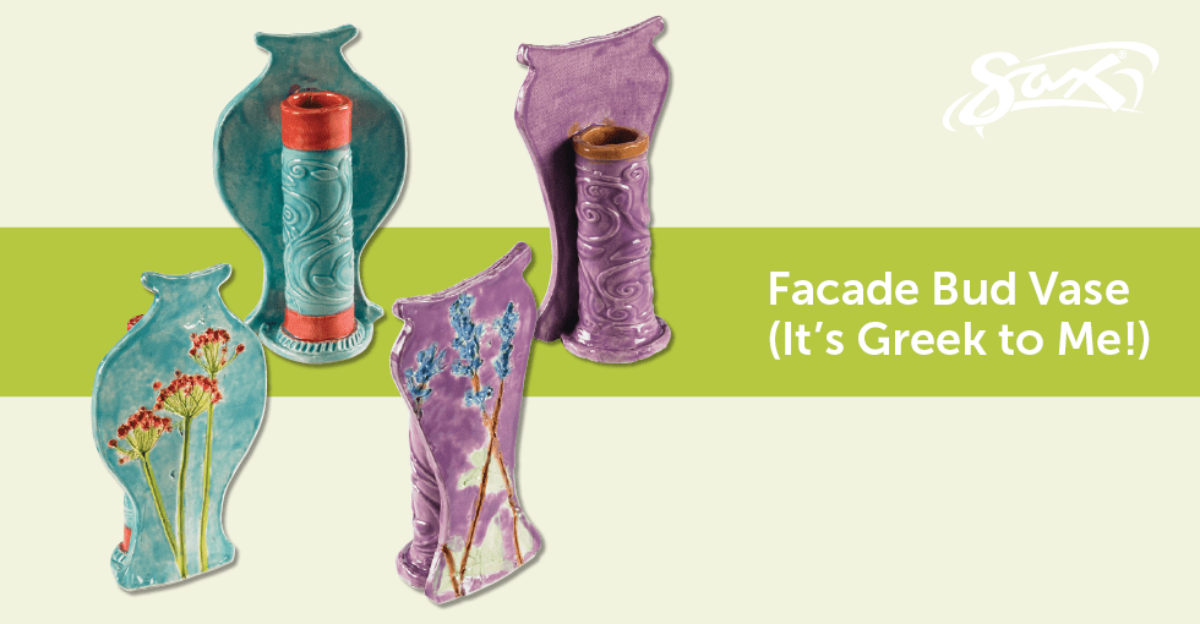Let’s take a spin back in time, say to somewhere around 2000 BC, when the first potter’s wheels arrived in Greece. They’d been using them in Egypt for years, but that’s another story.
The potter’s wheel enabled Greek artists to produce their wares more quickly, resulting in the increased availability of useful items like the Olpe, a Corinthian flask or pitcher used for oil or other liquids; the Amphora, a jar for carrying water or wine; and the Lekythos, a cylindrical bottle used to store olive oil.
Less time sculpting by hand also meant more time for decoration. Designs from this time period include natural imagery, historic storytelling, and geometric patterns. Our Façade Bud Vase project introduces students to several of the popular vessel types from this time period and enables them to create a faux-front vessel backed with a functional bud vase, compete with natural decorations.
Students begin by choosing and sketching a vessel shape, then tracing and cutting a slab of clay to match. A rolled clay bud vase is attached to the back of this flat front façade and both pieces are decorated, one pressed with natural elements like flower petals and leaves; the other rolled with a texture roller. The finished piece remarkably resembles an ancient Greek vessel.
Download a complete lesson plan for this project, including images, step-by-step directions, and a materials list, today!
For Grades 5-12.






Leave a Reply